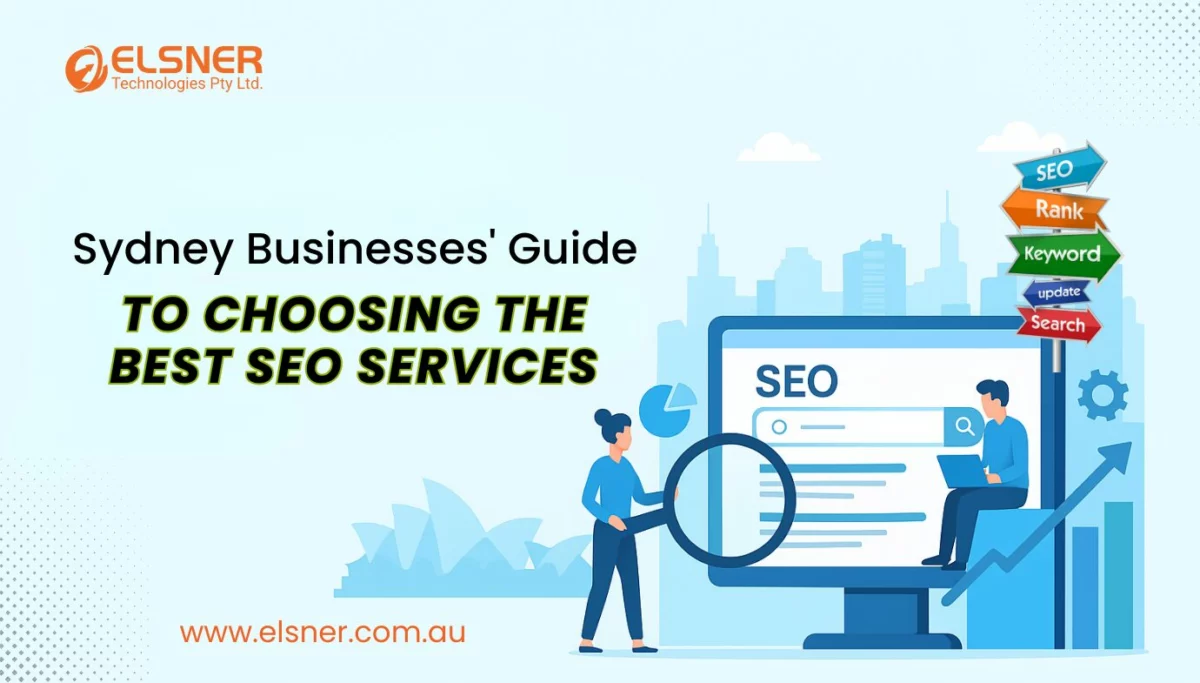Improve Your Web Design: 10 Ways SEO Can Help
SEOHow to Improve Your Web Design: Introduction
In the world of web design, SEO is very important if you want your website or blog to be recognized by search engines. SEO means Search Engine Optimization and it is the backbone of any website, be it a business site, personal site, or a blog. SEO can do a whole lot to improve your web design or website, whatever the case may be. The main purpose of SEO is to generate free traffic for websites with organic, natural, or editorial search results from search engines like Google, Bing, and Yahoo.
So making sure users stay and interact with the content on your website should be your biggest priority, which will, in turn, boost your website’s ranking. This can be done if you improve your web design, usability, and user experience.
If your approach is using keywords as a click-through link for visitors on your site, then you are only halfway through the optimization story. But if your approach to SEO means trying to improve your web design for search engine users then user-friendliness becomes a very crucial and important factor. The main purpose of this article is to explain and give you 10 out of the many ways SEO can help improve your web design overall with user-friendliness and usability.
Below are 10 ways SEO can improve your web design, in no particular order:
Domain Optimization on Wikipedia
Improving your web design is great because when someone visits a new location and needs to locate a bar, they look to Google. Searching Google brings up the list of the top rated sites on its algorithms. It’s a priority to be on Google’s list.
Using Wikipedia is a major advantage to improve your web design. Earning a link on Wikipedia would be a major turnaround for your SEO. Wikipedia is open to the public for posting and editing, so you can link your site wherever it is appropriate. Have in mind, however, that Wikipedia takes their responsibilities seriously. If your link is not valuable, they will probably remove it.
Optimizing Web Domains With Target Keywords
All content on your website can be optimized for search engines when users search for information online. Most people put in more effort in keyword optimization but still get no results. We tend to forget about other factors or aspects that affect SEO ranking.
One of the major factors that affect SEO is search engine algorithms. These algorithms do not only rate keyword relevance on your pages, metadata, or in relation to the search terms by users. They also evaluate information about the time visitors spend on your website, site bounce rate, the number of broken links, pages viewed, and inbound and outbound links.
So your first job as a web developer should be to optimize your web domain name with target keywords. Choosing relevant keywords is sometimes complicated, but your aim should be to target your niche; the services you render should be part of your target.
Including keywords in your domain name can improve your web design by boosting your domain’s search engine rankings. It can also add it to the search list of related queries. Let’s say one of the keywords on your website is “marketing,” a domain name like sceptermarketing.com could be of optimal advantage. Obviously, it is harder if you already have an established domain. It wouldn’t be worth changing the domain, but if it is a new website you are starting, then you should definitely consider this option.
Short Domain Name
It is also very important to note that, when choosing a domain name, you should also consider keeping the domain length short and simple. As seen in most other URL-based optimization methods and techniques, Google often prefers keeping things short, simple, and straightforward.
No need for long boring names, as it could also contribute to long domain links. As you add more characters, it complicates the user process. A long domain name makes it hard to remember or access a domain. Shorter is better when you want to improve your web design.
Improve Page Loading Speed.
When you want to improve your website’s potential in attracting more visitors, your site must be user-friendly and slick in its design and accessibility. By improving your site’s performance, the shorter it takes to load, the better it would be; even a second can be a significant improvement for your site. It isn’t the best option on this list but it is critical for your users.
For users to stay longer on your website, they would like it if the site is fast and responsive. According to research by KissMetrics, 47% of website users expect web pages to load in two seconds or less. 40% abandon a website that takes three seconds or more to load, while a one-second page response delay results in a 7% reduction in conversions.
Make sure your site loads within this timeframe, or risk losing visitors as well as bounce and exit rates, even though your site ranks top on search positions. So conduct a speed test on your website using the Pingdom tool.
Publish Your Sites WHOIS Information
WHOIS is pronounced “who is.” It is like a register for all websites hosted on the internet. It is an information portal for registering and finding various resources of any site. You look up your website’s IP and contact information for the webmaster. As a website creator, you have the option to block or make such information public. Some people who are always private about their stuff would definitely block this information, but it is always better to go public. If your information is hidden, it would get Google to think you are trying to do something sneaky.
Make sure you correct server errors immediately
Sometime your site might go offline, either because of server crashes or because some pages have individual errors. It is the reality of the modern world of web development, so all you have to do is keep an eye on your servers’ status, and respond to these errors quickly in order to keep your domain active online.
Always Make Sure Your URLs Are Static
As a web developer, it is important you know the difference between dynamic and static URLs. The terms might sound strange, but let’s start with dynamic URLs: types of URLs that provide different content results based on the query to a site’s database. Static URLs, on the other hand, only change when someone manually alters the site’s backend code.
So in other to keep the authority of your domain and individual pages, you have to make your URLs static for higher results.
Always Shorten Your Page URLs
You should shorten your page URLs for the same reasons you shortened your domain name. This is basically for your own benefit and advantage as well as that of your users. Making your URLs short helps in organizing your site way better.
For instance, if you have an “about and contact us” subcategory page, keep it short with “about us” or “contact us.” So if you have long blog titles like “how to recover from failed business situations in life,” you should probably consider keeping it short to “failed-business-situations” as the extension to your URL.
Always focus on what matters and forget about unnecessary extensions.
Always Make Sure Images Are Properly Formatted
Images bring out the beauty of a website, so it is good to include images all over your site. This could either be entries in your site’s photo gallery or supporting materials for blog posts. One should, however, note that not all images on your site would do the trick; some images are definitely far better than others in terms of suitability.
Some formats may not be supported and, in turn, load improperly on different devices, while others may simply affect your page loading speed. It is a generally advised to upload image formats like JPG, PNG, and GIF, which are the most reliable.
Other considerations would be the reduction of your image sizes to further improve your site speed. Furthermore, optimizing the text and descriptions would also increase your site’s chances of Google’s image search listing it. So always firstly consider giving all your images appropriate titles: short and simple, but focused on what the image portrays.
Imagine that you are a user who is searching for an image by giving it an alt tag that describes it in detail.
Never Forget To Secure Your Site With SSL Encryption
Finally, never joke about this aspect of securing your site with SSL encryption. Even though it’s a small ranking option it’s worth the try. Google’s introduction of SSL encryption, which started in 2014, paved the way for website owners to secure their information.
Google hates when site content is duplicated. If something already appears somewhere on the web, why also exist somewhere else? It is possible and common to have duplicate content, even if you are always careful of avoiding plagiarism.
Google sometimes indicates two versions of a single webpage. This is because of the difference between the HTTP and HTTPS version of that webpage. This leads to the appearance of duplicate content where there is none. Google Search Console or third-party tools like SiteLine can check if these errors exist and correct and eliminate one version. Contact your hosting provider to apply this“HTTPS” security encryption for an additional fee and keep customers’ information safe.
Conclusion
For those who intend to build a new website for your business, it’s important that you consider these ten ways to improve your web design. This is because Google would only recognize a well-built site that is accessed by users.
Using CMS (Content Management Sites) like WordPress would help with SEO optimization as it comes optimized and ready to use. All you as an individual have to do is install the necessary plugins and you are good to go.
But you can always outsource SEO optimization to professionals to assist you. Consider hiring a white Label web design team to help you with additional steps to improve your search ranking by utilizing the latest web design and SEO tactics.
So, keep up with Google and build a remarkable strategy. Keeping up with the nitty-gritty of SEO can be a mystery to the business owners, especially when you’re managing the other parts of your business, like running it. We’re SEO experts who are providing SEO services in Australia to create reputation-building, long-lasting, sales-growing campaigns in Sydney, Melbourne, and across Australia.














